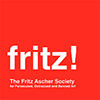

“There is something mad about the art”
The German-Jewish Art Dealer Alfred Flechtheim and his Heirs’ Fight for Restitution
Presentation by Journalist Michael Sontheimer, Berlin (Germany)
March 26, 2025 @ 12:00 pm - 1:00 pm
| FreeJournalist and author Michael Sontheimer speaks about Alfred Flechtheim, who was born in 1878 in Münster as the son of a wealthy German Jewish grain dealer. He was trained as a trader but did not want to stay in the family business. As he was fascinated with art, he left his hometown and moved to Düsseldorf, where he opened a gallery in 1913.
Image above: Rudolf Großmann, Alfred Flechtheim, 1922-27. Pencil, ink, and gouache on paper, 5.3 x 3.8 in. Museum für Moderne Kunst, Freiburg (Germany) G 62/008 b.
After serving in the German Army during the First World War, in 1921 he opened a second gallery in Berlin, the place to be in the 1920s. He brought works from modern French artists like Picasso, Braque, Chagall, and others to Germany. He also made German painters like Max Beckmann, George Grosz, and Paul Klee widely known.
Image above: Rudolf Großmann, Alfred Flechtheim, 1922-27. Pencil, ink, and gouache on paper, 5.3 x 3.8 in. Museum für Moderne Kunst, Freiburg (Germany) G 62/008 b.

Alfred Flechtheim, 1911

Front Cover of Der Querschnitt, vol. VIII, no. 6, Juni 1928. Berlin: Propyläen Verlag, 1928
Adolf Hitler and the National Socialists targeted Flechtheim not only for his involvement with ‘Entartete Kunst’ but also for being Jewish, using him in Anti-Semitic propaganda. After Hitler’s rise to power, Flechtheim fled to Paris, where he had to cheaply sell paintings. Many artworks from his gallery and personal collection were stolen. He died in London in 1937 in poverty and despair. His wife, Betty Flechtheim, took her life the night before her announced deportation “to the East”.

“Die Rassenfrage ist der Schlüssel zur Weltgeschichte” (“The race question is the key to world history”). Front cover Illustrierter Beobachter, 1932. Foto: Flechtheim-Estate

Rudolf Hermann, Entartete Kunst exhibition poster with Otto Freundlich’s sculpture, Large Head (Der Neue Mensch, 1912) and a caricature of Alfred Flechtheim in the background, 1938. Los Angeles County Museum of Art, gift of the Robert Gore Rifkind Collection, Beverly Hills, CA
In the 1950s, a nephew of Flechtheim, who had no descendants, submitted a claim for compensation. He received only a modest amount for artworks by renowned artists, including Picasso. Following the Washington Conference on Holocaust-Era Assets, held from November 30 to December 3, 1998, in Washington, D.C., which reinforced the rights of individuals seeking the restitution of Nazi looted art, Flechtheim’s grandnephew, Michael Hulton, residing in San Francisco, pursued restitution. However, the museums in possession of the artworks that once belonged to Flechtheim contested their return. The heirs successfully reclaimed a limited number of paintings, yet several remain subject to dispute.

Oskar Kokoschka, Marquis Joseph de Montesquiou-Fezensac, 1910. Return of the painting by Moderna Museet in Stockholm to Flechtheim-Heir Michael Hulton in 2018. Sold at auction by Sotheby’s.
Michael Sontheimer was born in 1955 in Freiburg, Germany. He studied modern history and politics at the Free Universität in Berlin. Becoming a journalist, he was one of the founders of the daily newspaper “die tageszeitung”, later he was a staff writer with DIE ZEIT and DER SPIEGEL. He published ten books on political and historical issues like: Goetz Al /Michael Sontheimer: How Julius Fromm’s Condom Empire Fell to the Nazis. Other Press, New York 2009.


